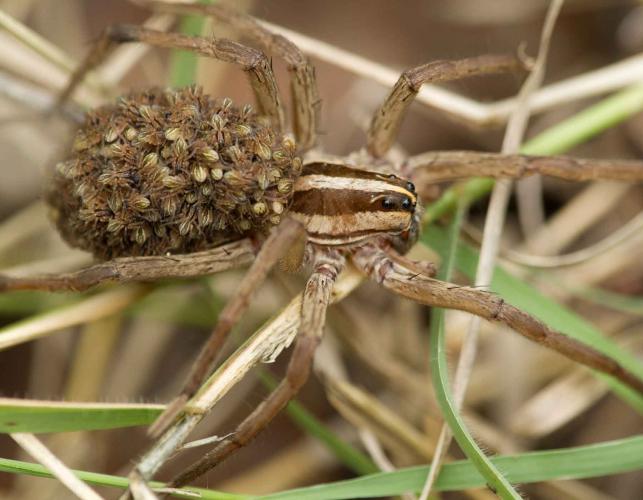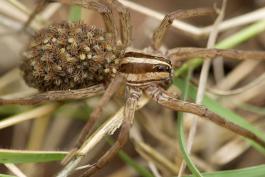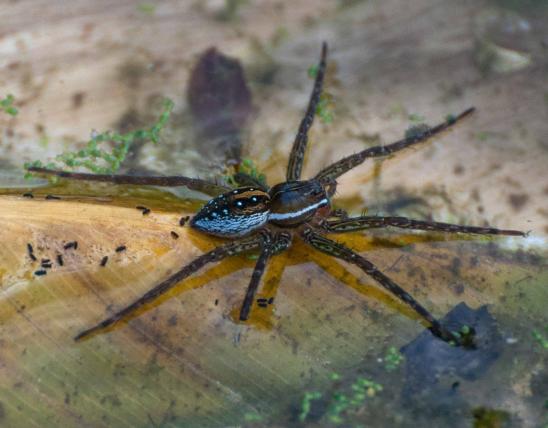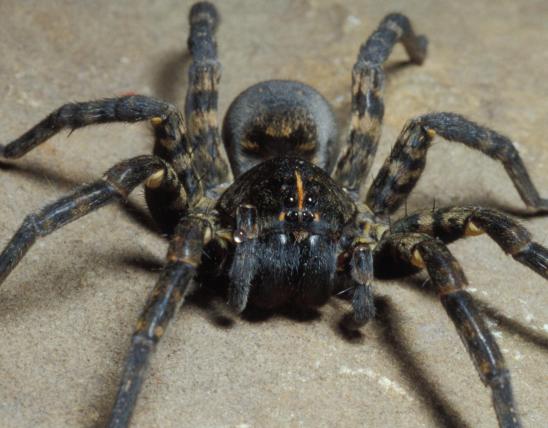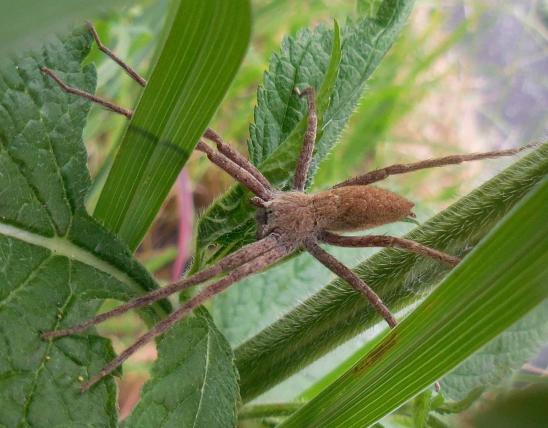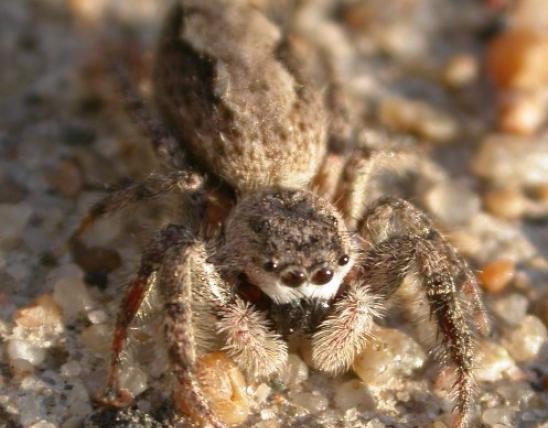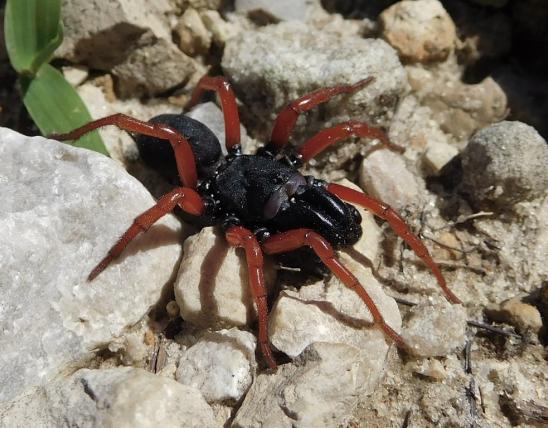
The rabid wolf spider, despite its scary name, is harmless to people and is absolutely not rabid.
This species is a common Missouri wolf spider. It typically hides in leaf litter and sometimes gets into houses. One clue to the identification of this species are small white eyebrow-like marks behind the eyes. Another has to do with the broad brown stripe that runs down the top of the abdomen: in this species, there are small whitish spots on the hind part of the stripe, next to the tan stripes that border it (that is, the broad brown middle stripe is solid brown).
Like other wolf spiders, these are athletic spiders that don’t spin webs to catch their insect prey; instead, they run it down like a wolf.
Female rabid wolf spiders have remarkable maternal instincts and are often seen carrying around their blue, gray, or tan, pea-sized egg cases attached to their spinnerets. If they are forced to drop the egg case, they return to search for it, sometimes frantically, then run away with it in their jaws, to reattach it to the spinnerets later. After the young spiders hatch, they ride around on their mother's abdomen until they are able to be independent.
Males of this species have the first pair of legs black or very dark brown.
There are many different species of wolf spiders, and they can be hard to identify to species.
Learn more about this and other wolf spiders on their group page.
Status
This, like nearly every other spider, possesses a venom that enables it to subdue insect prey. It is possible that if mishandled this spider, like nearly any other, could bite a person. The bite is said to be painful for a few hours, but it is not considered medically significant.
Despite the name, this species cannot be rabid. It's impossible for spiders and insects to be rabid. Only mammals (including people) are capable of being infected with the rabies virus. Perhaps this spider got its name because it can run around very quickly, making it seem crazed. Someone should make up a new, fairer common name for this nifty-looking spider.
